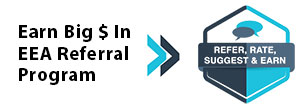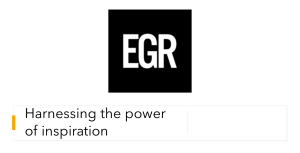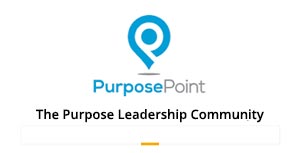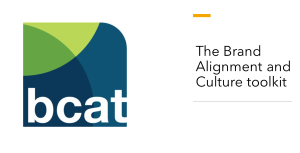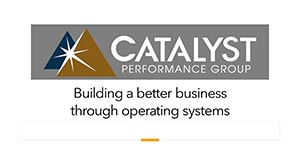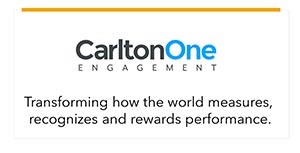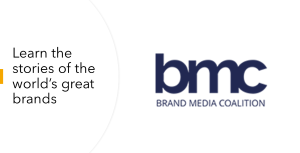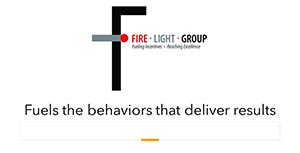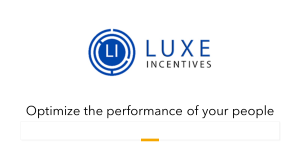Is Enterprise Engagement an Opportunity for Agencies Seeking a Pivot?
 Marketing and advertising agencies know they face a mortal threat from AI, which can automate vast portions of demographic analysis, messaging, visuals, and even digital ad placements. The jury is out on whether they will discover enterprise engagement: the almost untapped market for helping organizations enhance performance by harmonizing the interests of all their customers, sales and non-sales employees, distribution and supply chain partners and communities.
Marketing and advertising agencies know they face a mortal threat from AI, which can automate vast portions of demographic analysis, messaging, visuals, and even digital ad placements. The jury is out on whether they will discover enterprise engagement: the almost untapped market for helping organizations enhance performance by harmonizing the interests of all their customers, sales and non-sales employees, distribution and supply chain partners and communities. By Bruce Bolger
Enterprise Engagement Defined
The Opportunity
Market Potential and Competition
The Advantages of Enterprise Engagement
Click here to subscribe to the ESM weekly e-newsletter.
In a recent Linkedin post, marketing influencer Marcus Sheridan warns agencies that their business models are in peril and that most will be gone in five years unless they embrace new solutions. His recommendations focus on such tactical solutions as:
1. Deep strategic coaching
2. Aggressive AI search optimization
3. Intensive AI training
4. Hands-on sales training
5. Creative social + YouTube strategy
6. Self-service tool creation (estimators, schedulers, etc.)
7. Disruptive, attention-grabbing brand plays
How about something far more strategic and essential: enterprise engagement.
Marketing agencies have all the basic tools and capabilities needed to play a meaningful role in helping organizations achieve their purpose, goals and objectives both at the strategic and tactical level through a strategic and systematic approach to stakeholder engagement. Call it total quality management for people.
Enterprise Engagement Defined
 As defined in Wikipedia, enterprise engagement is a strategic and systematic way to achieve strategic or tactical goals by engaging all the stakeholders critical to success. It employs most of the same elements as total quality management for manufacturing, so its use is already well-proven. That practice even has an ISO 10018 standard for managing total quality management for services companies.
As defined in Wikipedia, enterprise engagement is a strategic and systematic way to achieve strategic or tactical goals by engaging all the stakeholders critical to success. It employs most of the same elements as total quality management for manufacturing, so its use is already well-proven. That practice even has an ISO 10018 standard for managing total quality management for services companies.Enterprise engagement aligns the interests of all key stakeholders in a common purpose through leadership, communications (in all its forms), learning, technology, metrics, and more.
It requires many of the same communications, analytics and technologies used in marketing and there are no signs yet of anyone using AI to replace the process of inspiring, engaging and harmonizing the interests of all people.
The enterprise engagement framework includes:
- Brand architecture: the organization’s purpose, goals, objectives and values and means of creating value for all stakeholders, customers, customers, distribution and supply chain partners, and communities.
- An operating system for holistic implementation.
- Permission-based communications: the ability to tell the brand story in a meaningful way in a consistent manner to harmonize the interests of all stakeholders, including digital, video, and print.
- Learning and gamification to make sure people have the capabilities.
- Surveys and feedback to ensure voice.
- Innovation strategies for new products and continuous improvement.
- Rewards and recognition to meaningfully express appreciation and creating memories.
- Loyalty and promotions to make customers feel valued.
- Enterprise engagement technology to align all engagement tactics on a single application with harmonized branding and messaging.
- Metrics that link and correlate activities with actual impact and prescriptive analytics.
The Opportunity
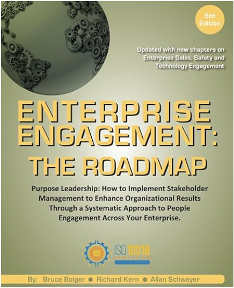
Employee and customer engagement remain near record lows according to Gallup and the American Customer Satisfaction Index, with few signs that many organizations have developed effective performance improvement efforts. Worse yet, while micro-estimates put the waste to the economy in the trillions of dollars worldwide, very few organizations have any idea how much disengagement is costing them.
Business worldwide has a terrible engagement challenge. Not only do surveys consistently underline the lack of employee and customer engagement and loyalty, and the potential costs to business overall, almost no one talks about measuring the specific cost to each organization. Equally infrequent is a strategic and systematic approach to aligning the interests of all stakeholders in support of the organization or their specific roles as stakeholders. The state of stakeholder management practices mirror those of total quality management in the 1980s--ad hoc, reactive.
Sales and non-sales employee, customer, and channel partner engagement practices remain largely tactical and poorly measured, with the primary focus on measurement of activities rather than outcomes.
There are multiple explanations.
- CEOs usually cannot measure the true value created by people, as human capital is poorly tracked in traditional accounting. Most human capital is buried under the balance sheet category of goodwill.
- The concept of strategic enterprise engagement management is taught almost nowhere.
- Most organizations employ a largely tactical approach to engagement, much like the state of quality management in the 1900s before the emergence of the more strategic total quality management approach.
- Most organizations have silos between the various tactical tools in human resources, sales, marketing, logistics, research and development that impede alignment and in many cases create friction and add costs.
Market Potential and Competition
Given that enterprise engagement encompasses everything organizations do specifically to engage stakeholders, the market is huge. One of the biggest segments is incentives, rewards, and recognition. Some have called into question the official Incentive Federation market estimate of $176 billion in spending alone for non-cash rewards to engage employees, customers, and distribution partners. However, there is another way to arrive at reasonable market estimates that make the IF estimates plausible, especially because its estimate doesn’t include the over $1,000 per employee organizations spend each year on training, communications, and surveys, according to other estimates.
Here is a conservative estimate of the enterprise engagement market based on government figures of the number of employees, customers, and businesses in the US.
Employee engagement: $163 billion. Assumes that organizations spend on average $1,000 on tangible rewards, learning, communications, engagement technology, and benefits for about 163 million employees in the US.
Consumer engagement: $130 billion. Assumes that organizations spend collectively $500 per American over 16 years of age on loyalty and promotional programs, based on an estimated 260 million Americans over the age of 16.
Business-to-business engagement: $32 billion. Assumes that organizations spend collectively $500 per year to engage businesses with incentives, rewards, training, and communications.
Of 32 million estimated US enterprises, there are nearly 200,000 businesses (not to mention many other governmental, educational and other not-for-profit institutions) with annual turnover of $10 million a year or with 100 or more employees, distribution and supply chain partners, and customers whose engagement is critical to their success.
To help them address engagement, there are no more than 100 incentive, recognition, and loyalty firms, most of them focused on incentives, rewards, technology and events, a few of them represented by about no more than about 2,000 promotional distributors and related companies for whom this is generally tangential to their businesses. The largest of these companies generate near $1 billion in gross revenue, much of it for rewards and events. Most of these companies focus on the sale of incentives, recognition, rewards, and motivational events, with only a few offering a strategic and systematic approach that focuses on measurable outcomes and impact rather than the processes. Many of these firms lack the deep branding, story-telling, solution-agnostic tactics, and depth in analytics to develop and implement prescriptive solutions.
On the other hand, nearly 10,000 companies help US firms with training, but generally have little to do with other engagement tactics except to enhance training, and by some estimates there are 100,000 marketing agencies in the US.
The Advantages of Enterprise Engagement
Every new market poses challenges, but this one much less so because little investment is required. Most agencies can test it by presenting it to current clients or applying its principles to one tactical effort, such as launching a new product, enhancing sales of a current product, or improving customer satisfaction and referrals.
It’s strategic. Enterprise engagement defines the brand and designs a strategic and systematic approach aligning multiple tactics, rather than focusing only on tactics. When properly implemented and measured, clients can see the concrete contribution to their purpose, goals, objectives, values and financial results, making it a C-suite conversation.
It’s an enormous market ripe for disruption. Even the most conservative estimates make this an enormous market potentially rife with waste because of ad hoc, tactical implementation; poor impact measurement, and legacy siloed communications, survey and feedback, and learning processes. Think quality management in the 1980s.
It’s scalable and sustainable. When properly implemented, campaigns are updated each year or even more frequently just like advertising, often using technology enhanced by AI to automate communications, learning, surveys and feedback, analytics, and more.
Technology and AI enhanced. Today’s enterprise engagement technologies can streamline all key engagement levers on a single platform so that the brand architecture, communications, learning and other engagement efforts talk to one another.
Little investment is required. All the training tools and multiple technology platforms already exist, with a small but well-developed network of professionals who understand the principles. Multiple cash-flow positive companies with good client lists are probably available for acquisitions.
Multiple business models. Traditional marketing agencies are masters at coordinating various tactics and vendors to accomplish their missions. Enterprise engagement generates fees from professional services, pay for performance, outsourcing management, content creation, visual design, analytics, and more.
For More Information
Bruce Bolger, Founder
Enterprise Engagement Alliance
914-591-7600, ext. 230
Bolger@TheEEA.org
Enterprise Engagement Alliance Services
 Celebrating our 15th year, the Enterprise Engagement Alliance helps organizations enhance performance through:
Celebrating our 15th year, the Enterprise Engagement Alliance helps organizations enhance performance through:1. Information and marketing opportunities on stakeholder management and total rewards:
- ESM Weekly on stakeholder management since 2009. Click here to subscribe; click here for media kit.
- RRN Weekly on total rewards since 1996. Click here to subscribe; click here for media kit.
- EEA YouTube channel on enterprise engagement, human capital, and total rewards since 2020
 Management Academy to enhance future equity value for your organization.
Management Academy to enhance future equity value for your organization.3. Books on implementation: Enterprise Engagement for CEOs and Enterprise Engagement: The Roadmap.
4. Advisory services and research: Strategic guidance, learning and certification on stakeholder management, measurement, metrics, and corporate sustainability reporting.
5. Permission-based targeted business development to identify and build relationships with the people most likely to buy.
Contact: Bruce Bolger at TheICEE.org; 914-591-7600, ext. 230.


